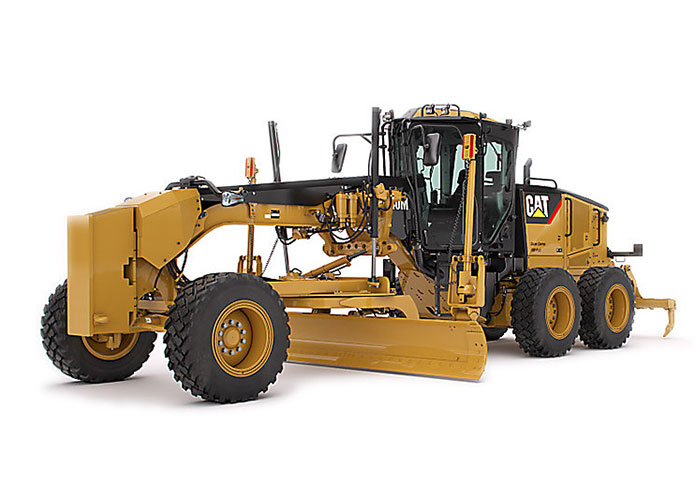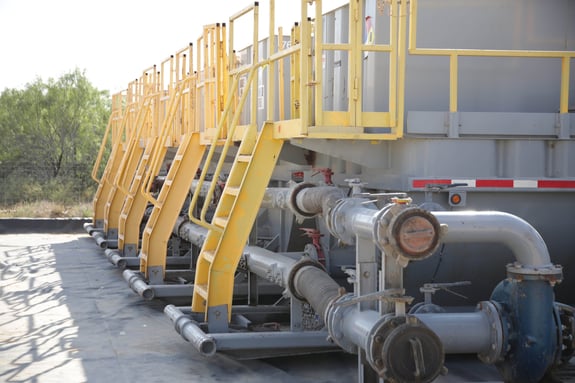Superior Rentals near me: proven strategies for choosing the right partner
A Comprehensive Guide to the Different Kinds Of Oil Field Equipment and Pipeline Equipment Available
The oil and gas sector relies heavily on customized devices for efficient extraction and transport. Numerous types of machinery, from drilling rigs to tank, play essential roles in this complex process. Each piece of devices offers distinctive features that add to total functional success. Understanding these components is necessary for any person associated with the sector. As the industry develops, so also do the modern technologies that support it. What advancements are on the horizon?

Drilling Rigs: The Foundation of Oil Expedition
Drilling rigs function as the vital machinery in the domain name of oil exploration, making it possible for business to access hydrocarbon gets buried deep under the Planet's surface. These rigs come in different kinds, including land rigs, offshore rigs, and mobile devices, each developed to run in particular settings. Geared up with sophisticated modern technology, drilling rigs can pass through geological formations with accuracy, ensuring effective source extraction. The architectural honesty and functional capabilities of these rigs are critical, as they need to withstand severe conditions and considerable stress. Moreover, the choice of a boring gear influences the total job price and timeline, making it a crucial factor to consider for oil companies seeking to maximize their exploration efforts and make best use of efficiency in their procedures.
Pumps: Vital for Liquid Movement
In the oil removal procedure, the role of pumps is substantial, facilitating the movement of fluids throughout various stages of production. Pumps are vital for delivering petroleum, water, and various other fluids from below ground tanks to the surface area and after that with pipes to refineries. They can be found in numerous kinds, consisting of centrifugal, favorable displacement, and submersible pumps, each serving certain objectives based upon the fluid qualities and operational requirements. Centrifugal pumps are commonly made use of for their performance in high-flow applications, while favorable displacement pumps master dealing with viscous liquids. The selection of pump effects general efficiency, functional safety and security, and upkeep costs. Proper option and upkeep of pumps are crucial for optimizing manufacturing and decreasing downtime in oil area operations.
Shutoffs: Managing Circulation and Pressure

Valves play a vital role in taking care of the flow and pressure of liquids within oil fields and pipelines. Numerous types of shutoffs offer distinct applications, each created to fulfill certain features fundamental for effective procedure - Superior Oilfield Rentals. Comprehending the characteristics and uses these valves is crucial for optimizing system performance and security
Sorts of Valves
Crucial components in oil field operations, valves play a critical role in controlling the flow and pressure of fluids within pipelines and devices. Different kinds of shutoffs are made use of to meet the diverse needs of oil and gas production. Common types include gate valves, which offer a straight-line flow and very little stress decline; world shutoffs, recognized for their strangling capacities; and round shutoffs, acknowledged for their fast on/off control. In addition, check shutoffs stop heartburn, while butterfly valves provide a lightweight service for controling flow. Each valve type is designed with specific products and arrangements to hold up against the rough problems commonly discovered in oil fields, guaranteeing reliability and efficiency in operations. Understanding these kinds is important for efficient system administration.
Valve Applications and Functions
While numerous kinds of valves serve distinct objectives, their key applications focus on controlling circulation and stress within oil and gas systems. Valves such as gate, world, and sphere valves manage fluid movement, making certain peak efficiency and security. Gate shutoffs are typically utilized for on/off control, supplying very little circulation resistance. World valves, on the various other hand, offer specific circulation YOURURL.com regulation, making them ideal for throttling applications. Round shutoffs are favored for their fast operation and limited sealing capacities. Additionally, stress relief shutoffs are vital for avoiding system overpressure, guarding devices honesty. Generally, the proper option and application of shutoffs enhance functional underground water leak repair effectiveness, ensuring the reliable transportation of oil and gas via pipes and processing centers.
Compressors: Enhancing Gas Transport
Compressors play a critical role in the reliable transportation of gas, making sure that it relocates smoothly via pipelines over cross countries. These tools increase the pressure of all-natural gas, allowing it to get over friction and elevation adjustments within the pipeline system. Furthermore, compressors facilitate the balancing of supply and need, suiting fluctuations in usage and manufacturing prices. Various types of compressors are used in the sector, consisting of centrifugal, reciprocating, and rotary screw compressors, each offering distinct advantages based upon the functional needs. Normal maintenance of these compressors is important to take full advantage of performance and minimize downtime, ultimately adding to a reliable gas transportation network. Their crucial function highlights the value of compressors in the total oil and gas framework.
Storage Tanks: Safe and Reliable Liquid Monitoring
Effective transport of gas counts on numerous sustaining systems, among which is the correct monitoring of storage space containers. These storage tanks play an essential duty in securely consisting of liquids, making sure that operational effectiveness is maintained while minimizing environmental threats. Constructed from durable products, they are made to hold up against high stress and destructive elements. Properly sized and strategically situated, storage tanks promote the smooth flow of natural gas and various other liquids, avoiding bottlenecks in supply chains. Normal upkeep and monitoring are important to find leaks or structural concerns, promoting safety and conformity with regulatory criteria. Eventually, the effective monitoring of storage tanks is crucial for the overall integrity and dependability of the oil and gas industry's liquid handling systems.
Pipeline Systems: Framework for Transportation
Pipeline systems function as the backbone of the oil and gas sector, helping with the efficient transport of hydrocarbons over vast ranges. These systems include different components, including pipelines, valves, pumps, and compressors, all diligently created to guarantee seamless circulation. The materials made use of in pipeline construction, usually steel or high-density polyethylene, are selected for longevity and resistance to rust. Pipeline networks can cover throughout land and water, attaching production sites to refineries and circulation. Additionally, advanced modern technology enables real-time tracking of circulation prices and pressure levels, improving functional efficiency. The tactical positioning of these pipes reduces ecological influence while making best use of resource ease of access, consequently playing an essential role in meeting energy demands internationally.
Safety Equipment: Making Sure Worker and Environmental Management
The operation of pipeline systems, while vital for energy transportation, also offers considerable security challenges for workers and the setting. Security Click Here equipment plays a considerable role in mitigating these risks. Personal protective equipment (PPE) such as headgears, gloves, and non-slip shoes safeguards employees from physical threats. Furthermore, gas detection systems keep an eye on for leakages, ensuring that dangerous compounds do not position a threat to employees or the surrounding community. Emergency shutdown systems are essential for rapidly halting operations during a situation, protecting against possible catastrophes. Spill containment products, including absorbents and obstacles, are fundamental for minimizing ecological impact. On the whole, investing in all-inclusive safety and security equipment is vital for preserving functional integrity and securing both workers and the setting in the oil and gas industry.

Often Asked Inquiries
Just how Do I Pick the Right Oil Field Equipment for My Job?
Picking the best oil area tools includes examining project specifications, budget restrictions, and operational requirements. Take into consideration aspects such as equipment integrity, compatibility with existing systems, and the provider's reputation to ensure peak performance and safety and security.
What Are the Upkeep Needs for Oil Field Equipment?
Upkeep needs for oil area tools include normal assessments, lubrication, and prompt repairs. Operators must also follow supplier standards, screen efficiency metrics, and warranty conformity with safety and security laws to improve durability and efficiency.

Just How Can I Guarantee Conformity With Environmental Regulations?
To ensure conformity with environmental regulations, firms must conduct routine audits, implement best techniques, spend in training, maintain appropriate documents, and stay updated on legislation (Superior Rentals near me). Collaboration with environmental firms can also improve adherence to laws
What Is the Ordinary Lifespan of Pipeline Equipment?
The typical life expectancy of pipeline tools normally ranges from 20 to half a century, depending on elements such as worldly top quality, ecological problems, and maintenance techniques. Routine inspections can substantially affect durability and functional effectiveness.
Just how Do I Safely Transfer Oil Field Equipment to Remote Locations?
Delivering oil field equipment to remote areas requires cautious planning, including course assessment, safeguarding licenses, using suitable lorries, and making certain safety protocols are complied with. Proper training and interaction among staffs are vital for successful transportation.